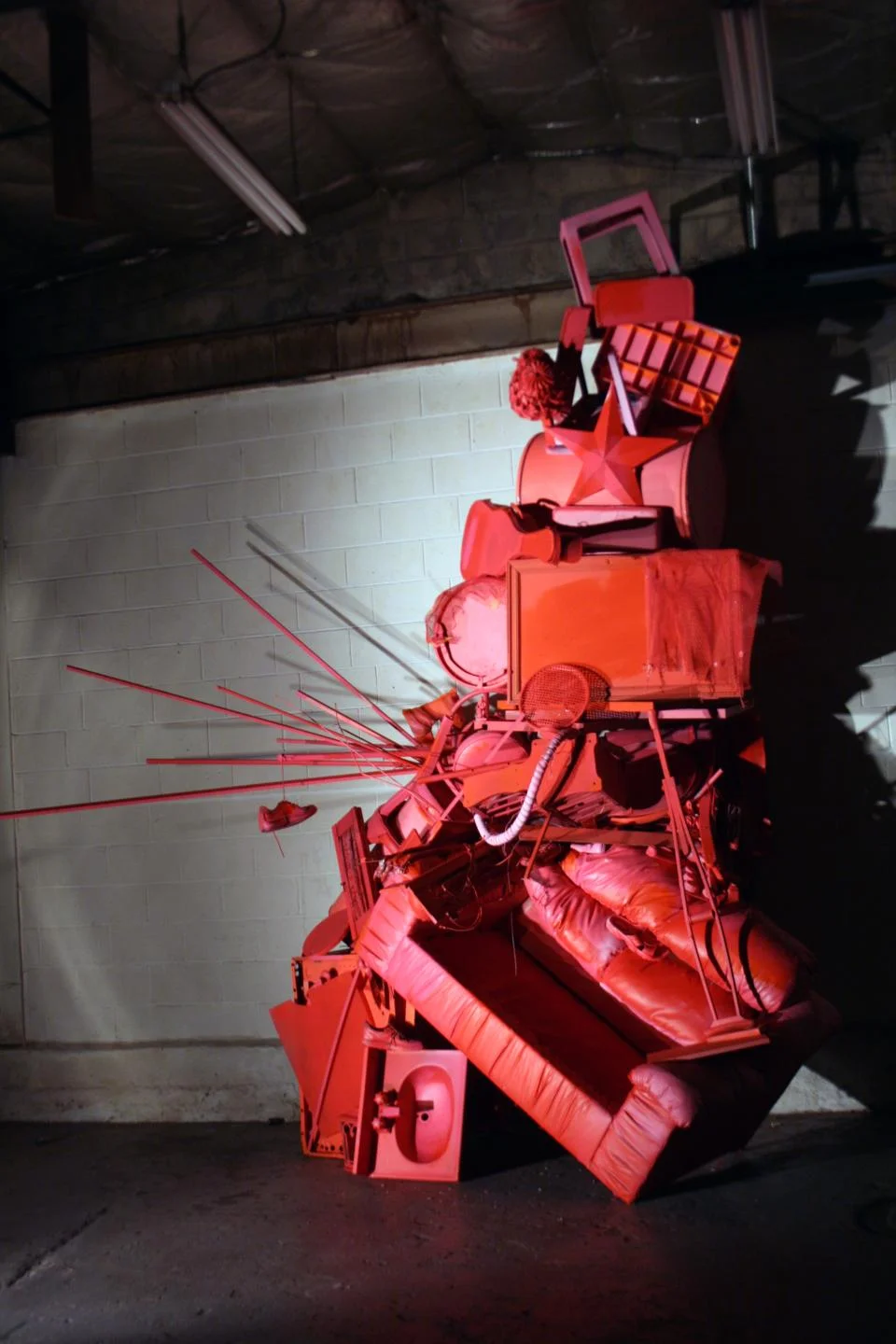(2014) Kirkland Art Center, Clinton NY
Order
There is a natural order of things and a human order of things, which may seem unnatural or possibly chaotic: “Listen to their chattering or shrill / world-songs about our plastics and forgetfulness and bombs.” Marc-Anthony Polizzi and Jarrod Beck, each in his own way, reflect on patterns of order and disorder through accumulated masses that seem to pulse with movement (even if that movement has been arrested).
Reveal/Conceal
How is the order of things revealed or concealed and why? With their installations, these artists invite such questions. They themselves may disrupt / disorder / reorder for the purpose of expanding understanding. They transform the unstable and the unsettling into something (beautiful) that allows us to approach that which can be difficult to apprehend.
Accumulation
Marc-Anthony collects a town’s cast-off stuff and reassembles it into a mass of things. These large sculptures look at once to be an implosion of cohering individual parts as well as an explosion frozen in time. The individual pieces all had former lives, as intimate as a shoe or a prosthetic leg, as generic as a small plastic party favor. The objects may be strangely poignant in their associations as they evoke moments in a viewer’s personal history. At the same time, though, the objects are absorbed into a whole that is unified by a single, saturated color. And, if individual objects are integrated into the larger form, the larger form is integrated into its space via a long connecting band of color, two dimensions into three and back again. Forms in space, and boldly sited.
Jarrod’s installation is comprised of wall-hanging vellum and, moving up the stage and into the small enclosed gallery, upright and undulating forms created with an accumulation of varied materials; these materials also are recycled, but it's a different kind of recycling. Jarrod’s layers of papers, mylar, and vellum are carried forward from his own previous projects, to form a historical chain, creating linkages between performances and installations past and future.
His forms present the viewer with several kinds of dichotomies to consider. The undulating and low-lying in natural colors suggest land masses wrought through geological time. There is also a vertical form that reads strongly as figurative, raised as it is on three beams, positioned in an animating manner. A long mylar form might be understood as a ridge, except that the shiny surface doesn’t translate well into our perceptions of landscape. It, too, is animated by both its support beams and its underlighting. Close inspection of the mylar reveals that it has received some of the rough handling - to a lesser extent - of the other pieces, which begs a question about chronology s this one shiny and new and are those aged?
And any discussion of beams and their covering, or skin, leads to architecture, in which Jarrod is trained. Landscape, figure, structure. One’s perception of the scale of the work shifts accordingly.
Loss
Accumulation suggests abundance, but No More Birds throbs with loss. Birds that were once present, but are no longer is an ominous portent, possibly of catastrophe.
Marc-Anthony’s accumulated mass is an observation about the disposability in our consumer culture. (Over the years, he has collected, for example, dozens of curbside vacuum cleaners that, for wanting a new belt, are perfectly operational). It helps that he installs his assemblages high on the wall because their looming presence, as one walks underneath to inspect all that stuff, becomes intimidating, even threatening, a reminder that we are buried under so much material.
Close inspection of the mylar reveals that it has received some of the rough handling - to a lesser extent - of the other pieces, which begs a question about chronology is this one shiny and new and are those aged?
Beauty from loss: “whose turn is it to open throated sing? / and what world's turn is it / to be sung of, a thing made noticed / that isn't, its beauty insisted.”
Mary Murray, Curator of Modern and Contemporary Art
Munson-Williams-Proctor Arts Institute, Utica, New York











































































































